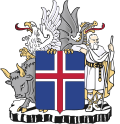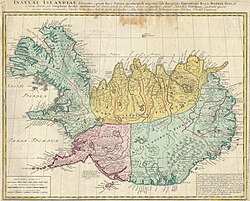This article needs additional citations for verification .(January 2023) |
You can help expand this article with text translated from the corresponding article in Icelandic. (January 2022)Click [show] for important translation instructions.
|
 |
|---|
This article shows the administrative divisions of Iceland .




